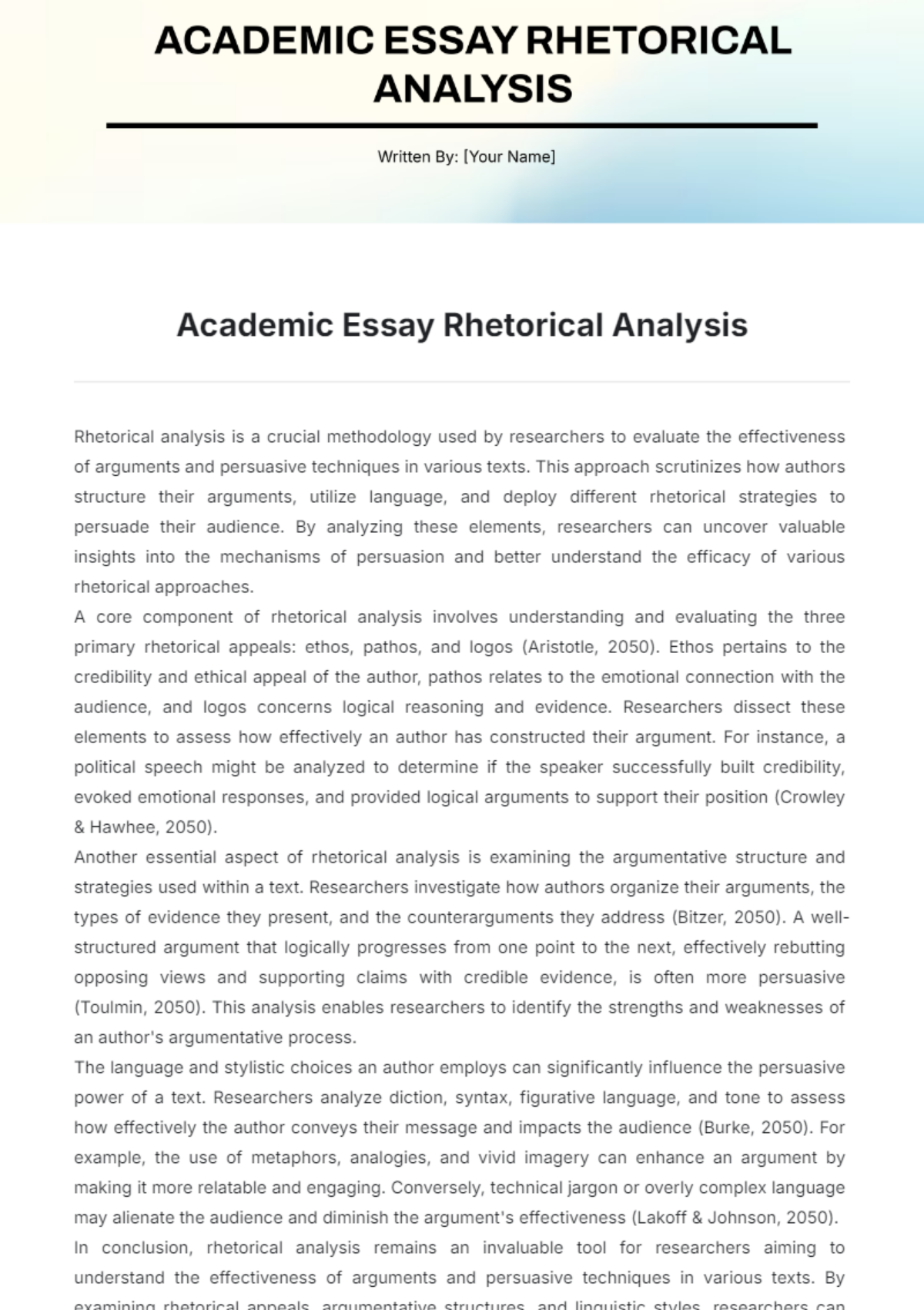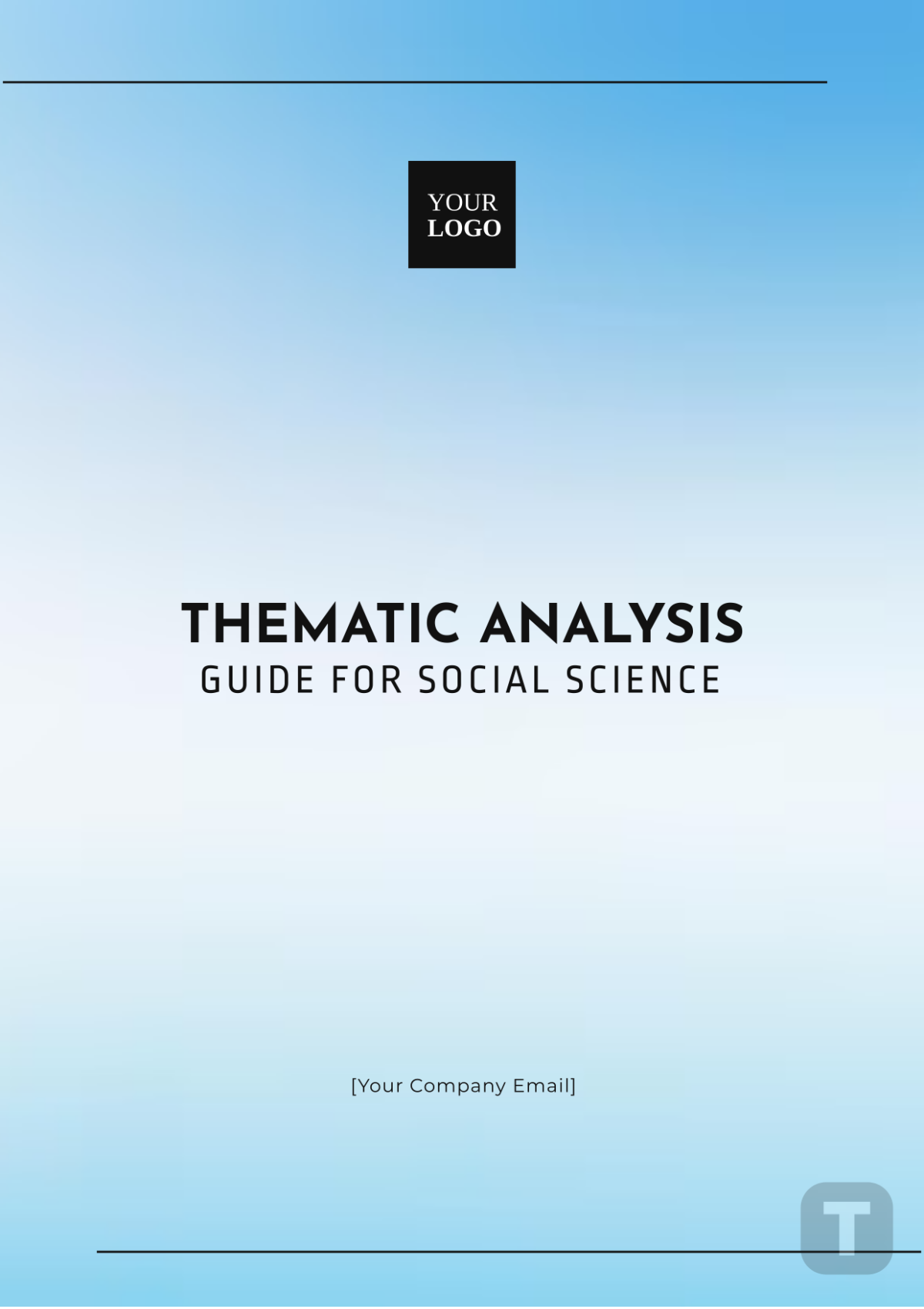Go-to-Market Competitor Analysis
1. Introduction
The Go-to-Market (GTM) strategy is a critical component for any organization aiming to successfully launch its products or services in the competitive landscape of [Your Company Name]. As we advance into the year [2050], the business environment is characterized by rapid technological changes, evolving customer preferences, and an increasingly complex competitive landscape. Companies must adapt to these changes not only to survive but to thrive in their respective markets. Conducting a comprehensive competitor analysis is essential for understanding our position within the market, identifying potential threats, and uncovering opportunities for differentiation.
This document outlines a systematic approach to competitor analysis, encompassing the identification of key competitors, their strengths and weaknesses, market positioning, and strategic implications for [Your Company Name]. By gaining insights into competitors’ strategies, we can refine our own GTM strategy to optimize our market entry, enhance customer engagement, and improve our competitive advantage. Moreover, the rapidly changing technology landscape will continue to introduce new competitors and disrupt existing market dynamics. Therefore, it is imperative for [Your Company Name] to regularly reassess its competitive positioning.
2. Objectives of the Competitor Analysis
The objectives of conducting a competitor analysis for [Your Company Name] are as follows:
2.1 Identify Key Competitors
Understanding who our competitors are is crucial for developing an effective GTM strategy. This includes both direct and indirect competitors in the market segment relevant to [Your Company Name]. Identifying these competitors allows us to categorize them based on their offerings and market strategies. For example, companies that offer similar products or services targeting the same customer base will be classified as direct competitors, while those providing alternative solutions addressing similar customer needs will be classified as indirect competitors.
2.2 Evaluate Competitor Strategies
Analyzing competitors' strategies allows [Your Company Name] to recognize effective tactics and approaches that have contributed to their success or failure. By understanding the strategies employed by our competitors, we can adopt best practices and avoid common pitfalls. This evaluation encompasses aspects such as marketing techniques, sales processes, customer engagement tactics, and distribution channels. Furthermore, it also involves analyzing competitors' technological capabilities and innovations, which can influence their market performance.
2.3 Assess Strengths and Weaknesses
A thorough assessment of competitors’ strengths and weaknesses enables [Your Company Name] to capitalize on their vulnerabilities while also identifying areas where we need to strengthen our own offerings. This analysis provides insights into how competitors manage resources, customer relationships, and operational efficiencies. For instance, if a competitor excels in customer service but has weaknesses in product innovation, [Your Company Name] could focus on innovation while maintaining high customer service standards.
2.4 Understand Market Positioning
Evaluating how competitors position themselves in the market helps [Your Company Name] identify unique selling propositions (USPs) and differentiate its products or services. Market positioning analysis involves examining branding strategies, target demographics, and overall marketing messages. Understanding the narrative competitors present to their customers can inform our own marketing strategies, enabling [Your Company Name] to create a more compelling value proposition.
2.5 Inform Strategic Decisions
The insights gained from this analysis will guide [Your Company Name] in making informed strategic decisions regarding product development, marketing, and overall business strategy. By incorporating competitor insights into our strategic planning, we can more accurately anticipate market trends and customer needs. This proactive approach allows us to align our business objectives with market realities, ensuring that our strategies are relevant and impactful.
3. Methodology
To achieve the objectives outlined above, [Your Company Name] will employ the following methodology for the competitor analysis:
3.1 Data Collection
Data will be collected from various sources, including:
Primary Research: Interviews and surveys with industry experts, customers, and stakeholders. This qualitative data can provide insights into customer perceptions and unmet needs in the market.
Secondary Research: Market reports, industry publications, financial statements, and online resources. This quantitative data helps in benchmarking competitors and understanding market trends.
The combination of primary and secondary research ensures a comprehensive view of the competitive landscape.
3.2 Competitor Identification
Using a systematic approach, competitors will be categorized into three groups:
Direct Competitors: Companies offering similar products or services targeting the same customer base. Understanding these competitors is essential as they pose the most immediate threats to [Your Company Name].
Indirect Competitors: Organizations that provide alternative solutions addressing similar customer needs. These competitors can divert customers away from our offerings, making it vital to understand their value propositions.
Potential Competitors: New entrants or companies expanding into our market segment that could disrupt the existing competitive landscape. Monitoring these potential competitors will enable [Your Company Name] to anticipate shifts in market dynamics and adapt accordingly.
3.3 SWOT Analysis Framework
The SWOT (Strengths, Weaknesses, Opportunities, Threats) framework will be used to evaluate each competitor. This structured approach provides a clear view of the competitive landscape. Each competitor's SWOT analysis will highlight critical factors that influence their market positioning and performance, informing our strategic responses.
4. Competitor Identification
The identification of competitors is essential for understanding the market dynamics. Below is a table listing key competitors of [Your Company Name] within the target market for the year [2050]:
Competitor Name | Type of Competitor | Product/Service Offerings | Market Share (%) |
|---|---|---|---|
Competitor A | Direct | Product X, Service Y | [25%] |
Competitor B | Direct | Product Z | [15%] |
Competitor C | Indirect | Alternative Service Q | [10%] |
Competitor D | Potential | New Product Line | [5%] |
Competitor E | Direct | Product A, Service B | [20%] |
Competitor F | Indirect | Substitute Product C | [25%] |
4.1 Analysis of Key Competitors
4.1.1 Competitor A
Overview: Competitor A is a well-established player in the market with a significant market share of [25%]. They have built a robust brand reputation over the years and have consistently delivered quality products to their customers.
Strengths: Strong brand recognition, extensive distribution network, and high customer loyalty. These attributes enable them to maintain a solid customer base and reach new customers effectively.
Weaknesses: High pricing strategy and limited product innovation. Their premium pricing may alienate price-sensitive customers, while a lack of innovation can make them vulnerable to new entrants offering more advanced solutions.
4.1.2 Competitor B
Overview: This competitor focuses on a niche market segment, offering specialized products that cater to specific customer needs.
Strengths: Expertise in niche market, innovative products, and strong customer relationships. Their ability to innovate and adapt to customer demands has earned them a loyal following.
Weaknesses: Limited market reach and scalability issues. Their narrow focus may hinder their growth potential and restrict them from reaching broader market segments.
4.1.3 Competitor C
Overview: Competitor C offers alternative solutions that address similar customer pain points, appealing to budget-conscious consumers.
Strengths: Competitive pricing and flexible solutions make them an attractive option for customers looking for affordability.
Weaknesses: Limited product features compared to direct competitors. Their focus on cost-effectiveness often results in fewer advanced features, which may not meet the needs of more discerning customers.
4.1.4 Competitor D
Overview: A potential competitor aiming to disrupt the market with innovative solutions that leverage emerging technologies.
Strengths: Strong backing from investors and a focus on sustainability. Their innovative approach positions them well in a market increasingly focused on eco-friendly solutions.
Weaknesses: Lack of brand recognition and experience in the industry. As a newcomer, they may struggle to establish credibility and trust with potential customers.
4.1.5 Competitor E
Overview: This competitor has a diversified product line and strong market presence, allowing them to cater to a wide range of customer needs.
Strengths: Wide range of products, effective marketing strategies, and established distribution channels enable them to penetrate various market segments.
Weaknesses: Complex organizational structure leading to slower decision-making processes. This can hinder their ability to respond quickly to market changes.
4.1.6 Competitor F
Overview: Competitor F offers substitute products that are gaining popularity among customers looking for cost-effective options.
Strengths: Lower price point and strong online presence contribute to their appeal, especially among younger, tech-savvy consumers.
Weaknesses: Inferior product quality and customer service issues. While they attract customers through price, their lack of quality can lead to customer dissatisfaction and churn.
5. Competitive Positioning
Understanding the positioning of competitors in the market allows [Your Company Name] to develop a unique and compelling value proposition. The following aspects will be analyzed:
5.1 Market Share Analysis
Market share is a crucial indicator of competitive strength. The table below illustrates the market share distribution among key competitors in [Your Company Name]'s target market:
Competitor Name | Market Share (%) |
|---|---|
Competitor A | [25%] |
Competitor B | [15%] |
Competitor C | [10%] |
Competitor D | [5%] |
Competitor E | [20%] |
Competitor F | [25%] |
5.2 Customer Segmentation
Customer segmentation is essential for tailoring marketing strategies effectively. Competitors target various demographics based on their offerings:
Competitor A: Focuses on high-income consumers looking for premium products.
Competitor B: Targets niche segments that require specialized solutions.
Competitor C: Appeals to budget-conscious customers seeking value.
Competitor D: Attracts environmentally-conscious consumers with innovative solutions.
Competitor E: Caters to a broad audience, leveraging diverse product lines.
Competitor F: Focuses on young, price-sensitive consumers predominantly online.
5.3 Marketing Strategies
Competitors employ various marketing strategies to enhance their market positioning:
Competitor A: Utilizes high-budget advertising campaigns emphasizing brand prestige and quality.
Competitor B: Relies on word-of-mouth referrals and specialized content marketing to reach niche audiences.
Competitor C: Implements discount strategies and promotions to attract price-sensitive customers.
Competitor D: Engages in social media marketing and sustainability messaging to attract eco-conscious consumers.
Competitor E: Uses broad-reaching digital marketing strategies and traditional media to maintain visibility across diverse demographics.
Competitor F: Focuses on influencer marketing and online promotions to engage younger audiences.
5.4 Product Differentiation
Differentiation is critical for establishing a competitive edge. The following highlights product differentiation strategies among competitors:
Competitor Name | Differentiation Strategy |
|---|---|
Competitor A | Premium quality and luxury positioning |
Competitor B | Specialization in niche markets |
Competitor C | Affordable pricing with basic features |
Competitor D | Innovative technology with eco-focus |
Competitor E | Diverse product offerings for various needs |
Competitor F | Budget-friendly substitutes |
6. SWOT Analysis of Competitors
Conducting a SWOT analysis for each identified competitor enables a deeper understanding of their strategic positioning and potential vulnerabilities.
6.1 Competitor A
Strengths: Strong brand recognition, extensive distribution network, and high customer loyalty.
Weaknesses: High pricing strategy and limited product innovation.
Opportunities: Expanding product lines into related categories and increasing digital marketing efforts.
Threats: Entry of low-cost competitors and changes in consumer preferences toward sustainability.
6.2 Competitor B
Strengths: Niche expertise, innovative products, and strong customer relationships.
Weaknesses: Limited market reach and scalability challenges.
Opportunities: Potential to broaden product offerings and expand into adjacent markets.
Threats: New entrants targeting niche markets and changing customer demands.
6.3 Competitor C
Strengths: Competitive pricing and flexible product solutions.
Weaknesses: Limited features compared to direct competitors.
Opportunities: Growth in demand for budget-friendly solutions and potential partnerships with discount retailers.
Threats: Price wars and shifts in consumer preferences toward quality over cost.
6.4 Competitor D
Strengths: Innovative product line and strong investor backing.
Weaknesses: Lack of industry experience and brand recognition.
Opportunities: Ability to capture market share through disruptive technologies.
Threats: Established competitors responding with innovation and potential regulatory hurdles.
6.5 Competitor E
Strengths: Wide range of product offerings and effective marketing strategies.
Weaknesses: Complexity in organizational structure leading to slower decision-making.
Opportunities: Expansion into international markets and potential for cross-selling products.
Threats: Competitive pressure from new entrants and changes in consumer behavior.
6.6 Competitor F
Strengths: Affordable pricing and strong online presence.
Weaknesses: Poor customer service and product quality issues.
Opportunities: Growth in online sales and increasing demand for budget-friendly options.
Threats: Price competition and shifts in consumer preferences toward quality.
7. Strategic Implications for [Your Company Name]
Based on the insights gained from the competitor analysis, several strategic implications can be derived for [Your Company Name]. These strategies will help us effectively position ourselves within the market and leverage competitive advantages.
7.1 Differentiation Strategy
To effectively compete with established players, [Your Company Name] should develop a clear differentiation strategy that emphasizes the unique features and benefits of our products or services. This may involve focusing on innovation, superior customer service, or enhanced product quality. By highlighting what sets us apart, we can create a compelling narrative that resonates with potential customers. Moreover, leveraging customer testimonials and case studies can enhance our credibility and attract new clients.
7.2 Target Niche Markets
By targeting niche markets where competitors have limited presence, [Your Company Name] can establish itself as a leader in specialized areas. Tailored marketing campaigns and personalized solutions can attract these customers and foster loyalty. Additionally, understanding the specific needs and preferences of these niche markets will enable us to design targeted offerings that meet their unique demands. This focused approach can create strong brand loyalty and reduce competition in those segments.
7.3 Competitive Pricing Strategy
A competitive pricing strategy that offers value without compromising on quality is essential. Implementing flexible pricing options, including discounts, bundles, or loyalty programs, can attract price-sensitive customers while maintaining profitability. This approach allows [Your Company Name] to position itself as a cost-effective option without sacrificing perceived quality. Furthermore, transparent pricing models can build trust with customers and reduce potential barriers to purchase.
7.4 Strategic Partnerships
Collaborating with other companies or organizations can enhance [Your Company Name]'s offerings and market reach. Strategic partnerships may include co-branding initiatives, technology collaborations, or distribution agreements that provide mutual benefits. Such partnerships can extend our market presence and introduce us to new customer bases. By aligning with established brands or influential organizations, we can bolster our reputation and credibility in the market.
7.5 Continuous Innovation
To stay ahead of competitors, [Your Company Name] must foster a culture of continuous innovation. Investing in research and development will enable the creation of new products or enhancements to existing offerings, ensuring we meet evolving customer needs. Encouraging feedback from customers can provide insights into areas for improvement and inspire new product ideas. Additionally, embracing emerging technologies can keep us at the forefront of the industry and differentiate our offerings from competitors.
7.6 Enhance Customer Experience
Improving customer experience should be a top priority for [Your Company Name]. This includes optimizing the purchasing process, offering personalized customer service, and actively seeking feedback to drive improvements. By investing in user-friendly interfaces, responsive customer service, and streamlined processes, we can create a seamless experience that enhances customer satisfaction. Furthermore, leveraging data analytics to understand customer behavior can allow us to personalize interactions and improve overall service quality.

















































